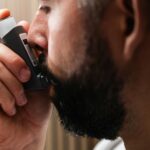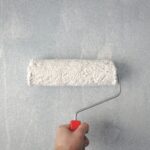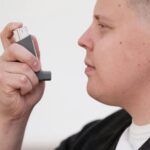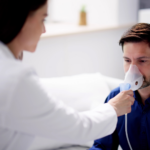For people with asthma, a car can either be a safe haven or a major trigger zone. Poor air quality, lingering odors, dust, mold, and even certain cleaning products can exacerbate asthma symptoms. Whether you drive daily or occasionally, ensuring your car is an asthma-friendly environment can significantly reduce the risk of flare-ups and make travel more comfortable.
1. Keep Your Car Clean and Dust-Free
Dust and allergens can accumulate quickly inside a car, leading to potential asthma triggers. Follow these steps to maintain a clean interior:
- Vacuum Regularly: Use a vacuum with a HEPA filter to clean seats, carpets, and floor mats.
- Wipe Down Surfaces: Use a damp microfiber cloth to remove dust from the dashboard, steering wheel, and vents.
- Avoid Cloth Seats: Fabric seats can trap dust and allergens. If possible, opt for leather or faux leather seats that are easier to clean.
- Wash Floor Mats: Regularly clean and dry rubber or carpet floor mats to prevent dust buildup.
2. Control Air Quality Inside the Car
The air inside your car can carry pollutants that may trigger asthma symptoms. Here’s how you can improve air quality:
- Use an In-Car HEPA Air Purifier: A good air purifier can filter out allergens, pollutants, and even harmful gases from car exhaust.
- Change Cabin Air Filters Regularly: Replace your car’s cabin air filter at least once a year or as recommended by the manufacturer.
- Avoid Recirculating Outdoor Polluted Air: When driving in areas with heavy traffic or pollution, set your air conditioning to recirculate mode to minimize exposure to outdoor pollutants.
- Let Fresh Air In: If the outdoor air quality is good, occasionally roll down the windows to allow fresh air circulation.
3. Avoid Strong Odors and Fragrances
Many air fresheners, perfumes, and car cleaning products contain chemicals that can irritate the airways.
- Ditch Artificial Air Fresheners: Instead of chemical-based fresheners, opt for natural alternatives like activated charcoal pouches or baking soda to absorb odors.
- Choose Fragrance-Free Cleaning Products: Use unscented and non-toxic cleaners when cleaning your car’s interior.
- Be Mindful of Fuel and Exhaust Fumes: Always ensure proper ventilation when refueling and avoid idling in enclosed spaces to minimize exposure to exhaust fumes.
4. Prevent Mold and Mildew Growth
Mold spores can be a serious asthma trigger, and cars are prone to mold growth due to trapped moisture.
- Check for Water Leaks: Ensure windows, doors, and sunroofs are properly sealed to prevent water from entering the car.
- Use a Dehumidifier Bag: Silica gel or dehumidifier bags can help absorb excess moisture inside the car.
- Run the AC Regularly: Running the air conditioner can help reduce humidity inside the car and prevent mold growth.
- Dry Wet Items Quickly: Avoid leaving wet umbrellas, clothes, or mats in the car for extended periods.
5. Minimize Pet Dander and Pollen
If you have asthma triggered by pet dander or pollen, take extra precautions when traveling with pets or during allergy season.
- Use a Pet Seat Cover: This helps contain pet hair and dander, making cleanup easier.
- Brush Pets Before Car Rides: Brushing pets outside before they enter the car reduces shedding inside.
- Keep Windows Closed During Allergy Season: This prevents pollen from entering the car.
- Shower and Change Clothes After Outdoor Activities: This minimizes bringing allergens into the car.
6. Be Prepared for Asthma Emergencies
Even with the best precautions, asthma flare-ups can still happen. Always keep an emergency kit in your car:
- Inhaler and Spacer: Store your rescue inhaler in an easily accessible location.
- Nebulizer (if needed): If you rely on a nebulizer, keep a portable version in your car.
- Asthma Action Plan: Have a printed copy of your asthma action plan for reference.
- Water and a Mask: Drinking water can help ease throat irritation, and wearing a mask can reduce exposure to dust and pollutants.
Final Thoughts
Making your car asthma-friendly requires consistent effort, but it significantly improves your comfort and health while traveling. By maintaining a clean interior, improving air quality, avoiding strong odors, and preparing for emergencies, you can create a safe and asthma-friendly driving environment. Small changes can make a big difference in reducing triggers and ensuring a smooth ride for you and your passengers.
Please share your experience in the asthma friend community.












